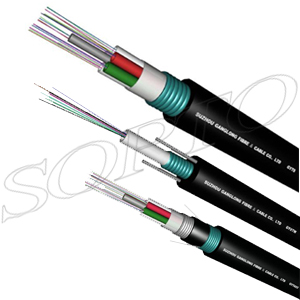- Fiber Optic Transceiver Module
- High Speed Cable
- Fiber Optical Cable
- Fiber Optical Patch Cords
- Splitter CWDM DWDM
- PON Solution
- FTTH Box ODF Closure
- PCI-E Network Card
- Network Cables
- Fiber Optical Adapter
- Fiber Optical Attenuator
- Fiber Media Converter
- PDH Multiplexers
- Protocol Converter
- Digital Video Multiplexer
- Fiber Optical Tools
- Compatible
- Data Center Solutions
- Top 5 features of xPON OLTs ...
- SFP-10G-SR and SFP-10G-LR �...
- Fused Biconic Tapered Splitt...
- What is TDMOIP
- The direct difference betwee...
- Nondispersion-Shifted Fiber(...
- About OM3 fiber
- What is an optical fiber
- The feature of Multi-mode op...
- HBA card
- About HBA
- Fiber closure
- Active Fiber Optic Cable Con...
- What are the types of fiber ...
- Sopto SC and FC Fiber Fast C...
- Outdoor FTTH Cabinet
- CWDM multiplexer
- DWDM multiplexer
- What is the advantages of di...

What are Fiber cable types
An optical fiber consists of a core, cladding, and a buffer (a protective outer coating), in which the cladding guides the light along the core by using the method of total internal reflection. The core and the cladding (which has a lower-refractive-index) are usually made of high-quality silica glass, although they can both be made of plastic as well.
Connecting two optical fibers is done by fusion splicing or mechanical splicing and requires special skills and interconnection technology due to the microscopic precision required to align the fiber cores.
Two main types of optical fiber used in optic communications include multi-mode optical fibers and single-mode optical fibers. A multi-mode optical fiber has a larger core (≥ 50 micrometers), allowing less precise, cheaper transmitters and receivers to connect to it as well as cheaper connectors.
However, a multi-mode fiber introduces multimode distortion, which often limits the bandwidth and length of the link. Furthermore, because of its higher dopant content, multi-mode fibers are usually expensive and exhibit higher attenuation.
The core of a single-mode fiber is smaller (<10 micrometers) and requires more expensive components and interconnection methods, but allows much longer, higher-performance links.
Related: Cisco compatible SFP cableRecommended Products:

Go Shopping for fiber optic cables
Related Brands: 3COM Compatible Transceiver Related News: Canada carriers Rogers pushed the GPON FTTH business


